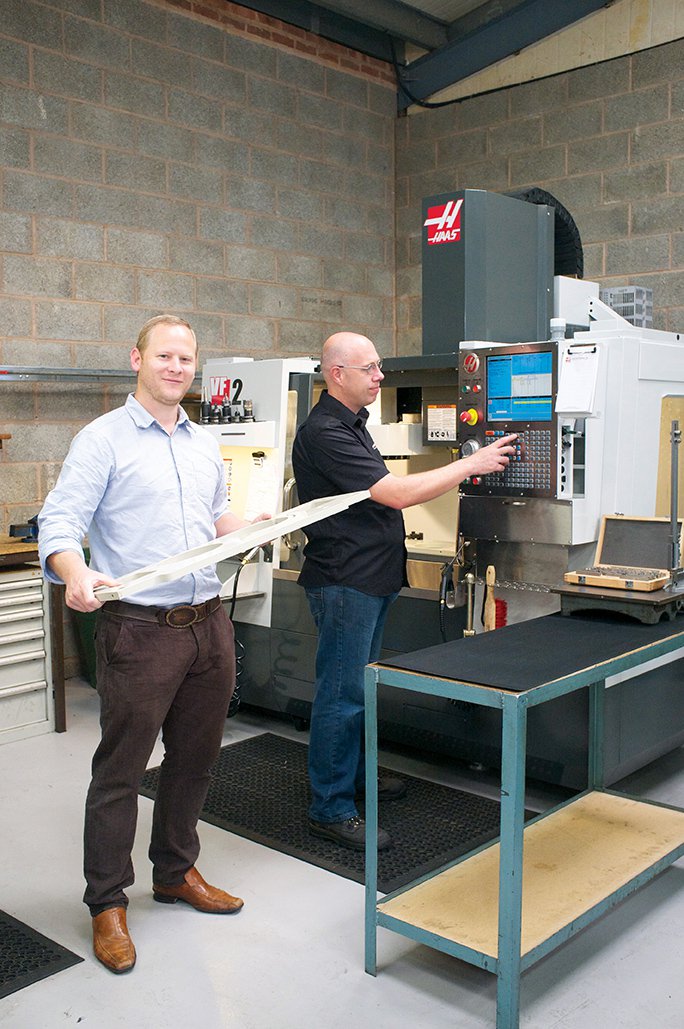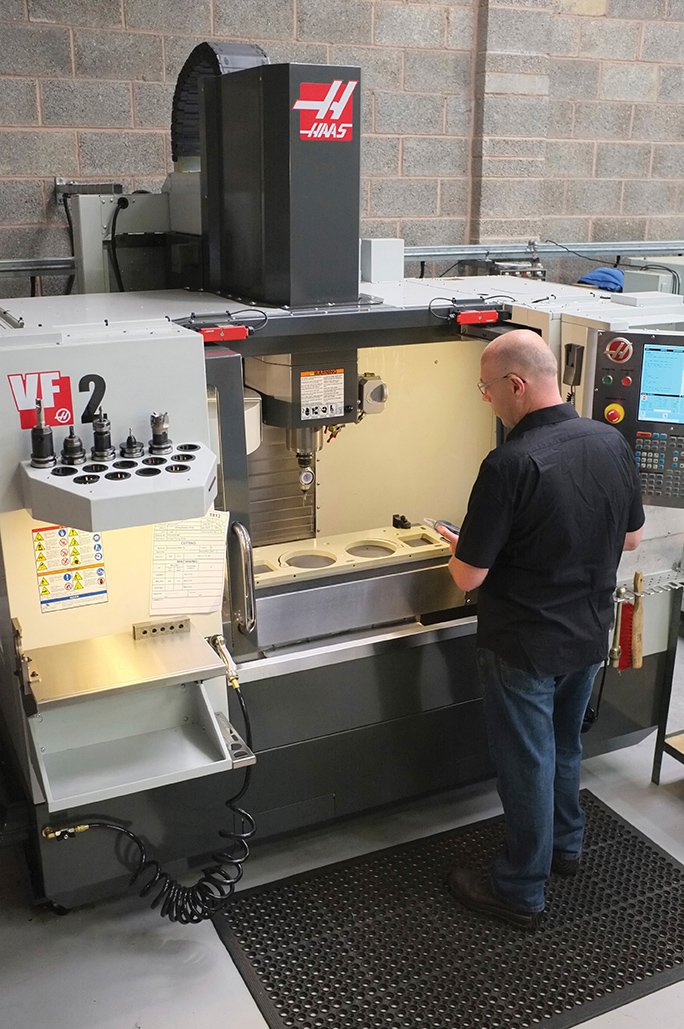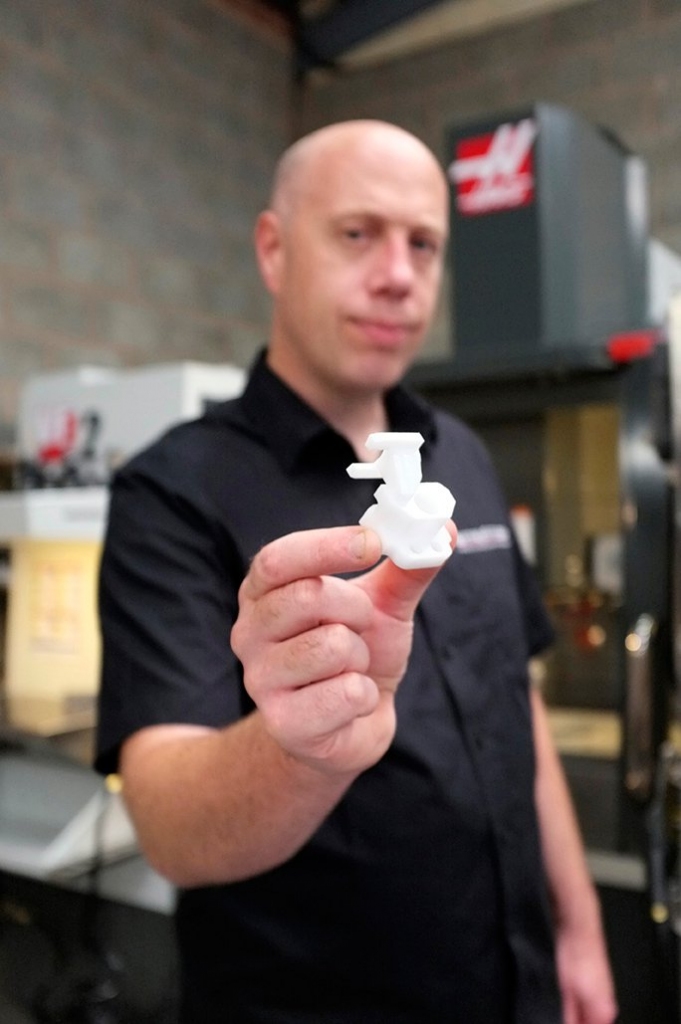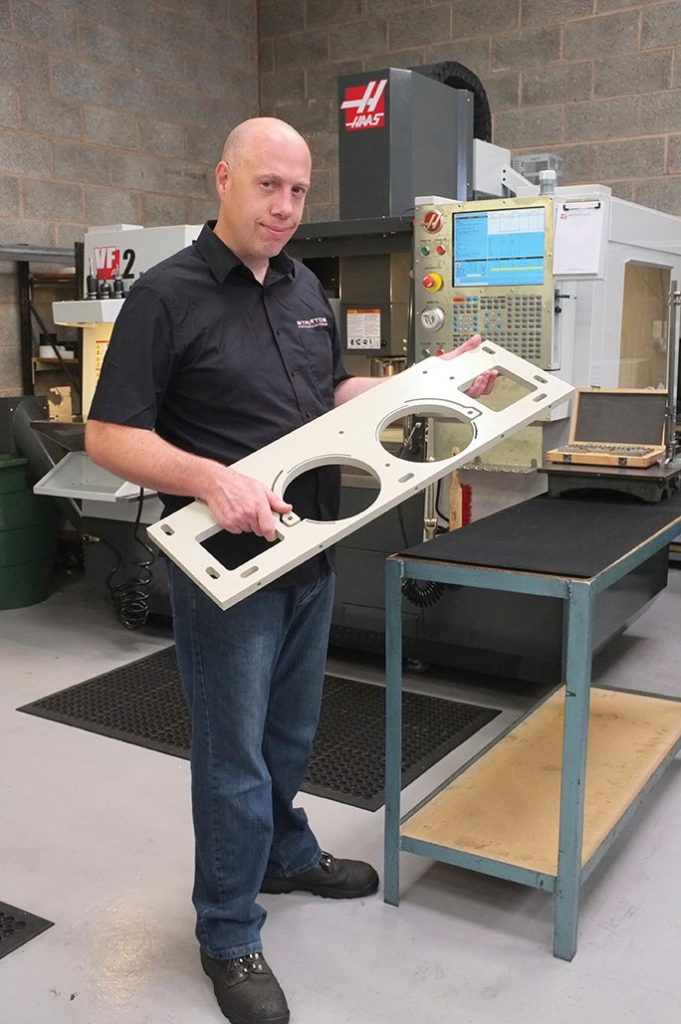Stratos Precision Engineering - The Plastics Experts
Stratos Precision Engineering Ltd specialise in manufacturing high-quality plastic and non-ferrous components from engineering plastics including Nylon, Acetal / Delrin, PEEK, PTFE, Polyethylene, Polypropylene & PET-P amongst many others.
The Gloucestershire based company machines items for a multitude of applications within industries including sub-sea, energy, transport, oil and gas and agriculture.
Joint owners Mark Vine and Jon Caple formed Stratos just 21 months ago. In that time, the company has rapidly expanded, currently employing 3 full time and 2 part time staff and running 11 CNC mills and lathes.

Jon Caple explains, “We met some years ago whilst working at the same precision engineering firm. We often talked about forming our own business and after working closely for two years we felt we had the requisite interlocking skills to make Stratos a reality. Six months later we had raised funds to buy our first CNC machines, a couple of second hand mills.
“Within three months we’d attained ISO 9001:2008 accreditation. The business was really picking up at a tremendous rate. After some very late nights learning the ‘dark art’ of search engine optimization our website was getting over 1,200 hits per month. The steady stream of work from repeat business became a torrent as more new clients joined our customer base. We knew we had to invest in more machinery and staff.”

“At present, we have two Haas CNC milling machines,” notes Mark Vine, “a VF-0E and a VF-2. The VF-0E we bought second hand, it’s now 20 years old and still runs perfectly, holding tolerance and maintaining positional repeatability. We recently invested in a new VF-2 with help from a Regional Growth Fund grant. The grant also enabled us to take on another member of staff.
“We decided on Haas because having worked with them for fifteen years, I knew they were more than capable of providing the quality and accuracy to keep us and, more importantly, our customers happy. The new VF2 has proven to be 15-20% more productive than our older machine, not only because it takes less time to generate a machine program using the VQC and user friendly interface, but also due to the faster cutting feed rates and rapid speeds.”

To simplify setup, the VF-2 is fitted with the Haas Visual Quick Code Probing System for setting work offsets and tool offsets.
“We probe some of the critical parts 100 percent,” Mark Vine says, “but generally, we use a probe hole to locate the vice or fixture, and a stop for the material.”
Mark Vine continues, “One of the Haas mills is currently cutting polypropylene clamping plates, which will be used to secure compressed air bottles to subsea ROVs. This is a three operation part with a cycle time of just under two hours, because of its many threaded cross-holes, counterbores, undercuts and slots.”
“The VF-0E is working hard producing a range of spares for the food industry. We can work from drawings or reverse engineer pretty much any part to produce small batches that will still work out way cheaper for our customers than the OEM’s own spares. Using our CAD package OneCNC XR6, we can accept customers’ drawings in various forms including DXF, DWG, PDF, IGES & STEP and transfer the program via USB to the VF-2 and other machines. Any adjustments can be easily made directly at the control.”

“The company has just acquired a local fabrication company, along with a customer base including household names such as Waitrose and John Lewis,” Jon Caple says. “It’s just ‘gone live’ in January and we can see huge potential in this latest venture.”
“We aim to be even more successful and enjoy further growth in the future,” concludes Jon Caple. “With our decision to invest in Haas, there is no reason we cannot continue tackling new engineering challenges in a cost-effective and reliable manner.”
With our decision to invest in Haas, there is no reason we cannot continue tackling new engineering challenges in a cost-effective and reliable manner.
Jon Caple, Owner




